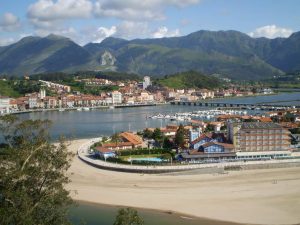In our Portuguese Way from Tui we can replace the Stage on foot from Caldas de Rei to Padron (18 Kms) by The Translatio-Translation by boat, also known as Spiritual variant of the Portuguese Way, and then we tell you the origin of the legend.
In the year 44 of our era, the Apostle Santiago was arrested and executed, by order of Herod Agrippa, for his mission of Christian evangelization.
According to the “Legend” it is believed that his disciples Athanasius and Theodore collected his remains and carried out this Translatio (Translation / Transfer) in a Stone Boat without any guide, except the Divine, carrying out this fantastic and miraculous odyssey from Haifa (Palestine) to the port of Iria Flavia (Padrón), along the Mediterranean Sea, the Atlantic Ocean and finally, the Ría de Arousa and the Ulla river, until reaching its final destination.
Once they reached their destination and, after numerous and painful circumstances, such as their “request for help from Queen Lupa”, who ruled that region, they proceeded to transfer the remains of the Apostle, until they reached Mount Libredon, where they were they finally deposited them, until Paio (an inhabitant of the area) found them, a fact that apparently occurred between 820-830.

As we indicated at the beginning of our post, you can go through the final part of La Translatio, in the Galicia area, in the Ria de Arousa and the Ulla river, until you reach Pontecesures, on a journey in Barca (we will transfer you to Villanova de Arousa to board). Route that runs in a natural environment of great beauty. In it we can see, as the main attraction, the only “fluvial maritime Via Crucis on the planet”, made up of 17 crosses, but only 12 of them can be visited, including “El Calvario”, as well as the remains of the Torres do West (XNUMXth century), mills, monasteries, fountains and chapels will be other charms of our walk.
Once our boat trip is finished, we will return to the foot of the last 2,5 Kms of the stage of the Portuguese Way to Padron, a town where the “Pedron” is located, the thousand-year-old pier / pier where they moored the boat of the Apostle Santiago.
These events are part of history and of this fabulous legend that for approximately 1200 years has shaped the event of the pilgrimage to Santiago de Compostela and attracts and illuminates millions of pilgrims from all over the world.
Once the remains of the Apostle Santiago have been transferred, we encourage you to discover where his tomb is located and its origins by hiring the services of our organizing agency of the Camino de SantiagoWe will provide you with a dossier of information on the route and we will tell you more details about the spiritual variant.
If you decide that the sea voyage is not for you, you can always take the most popular route and one traveled by pilgrims, which is the Camino de Santiago from Sarria. They are 2 completely different routes, and each one with its attractiveness at the choice of the walker.









